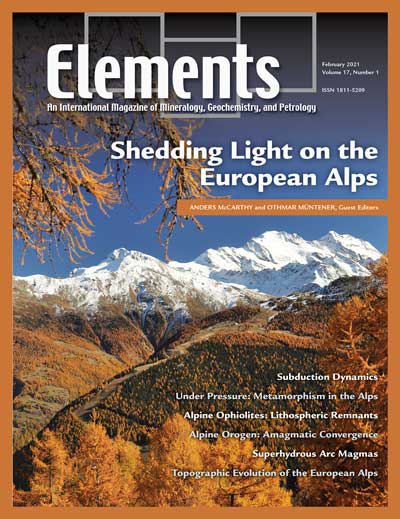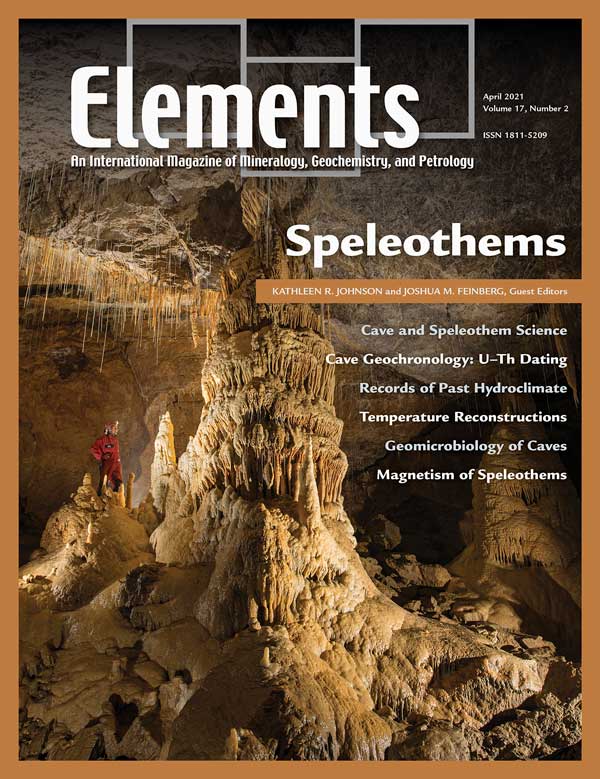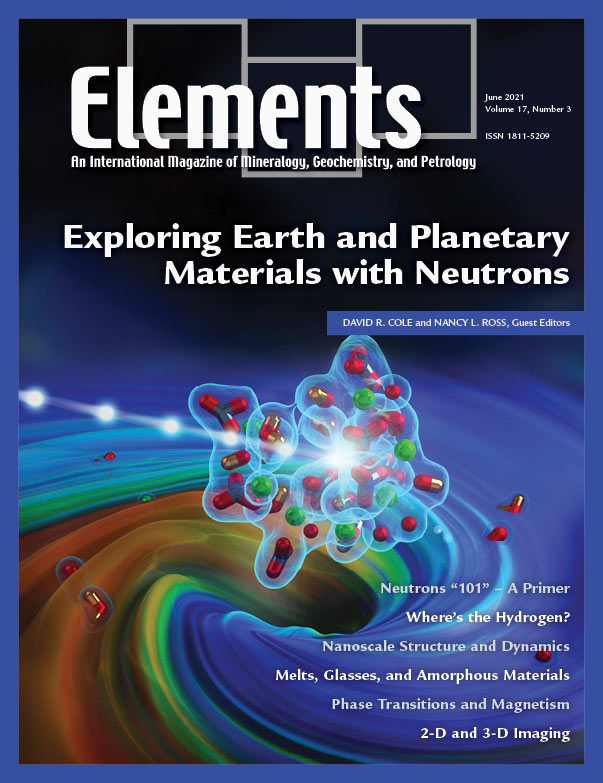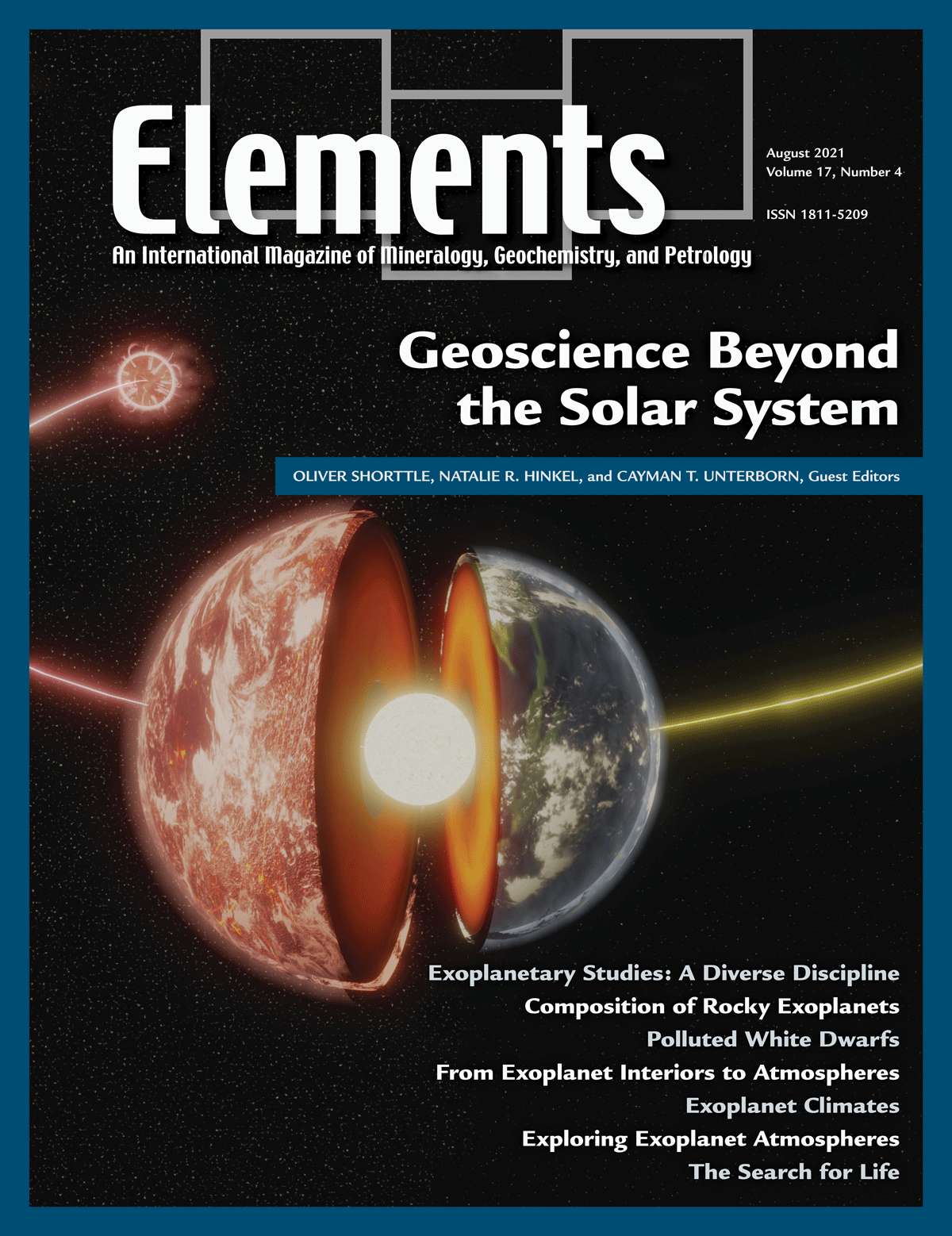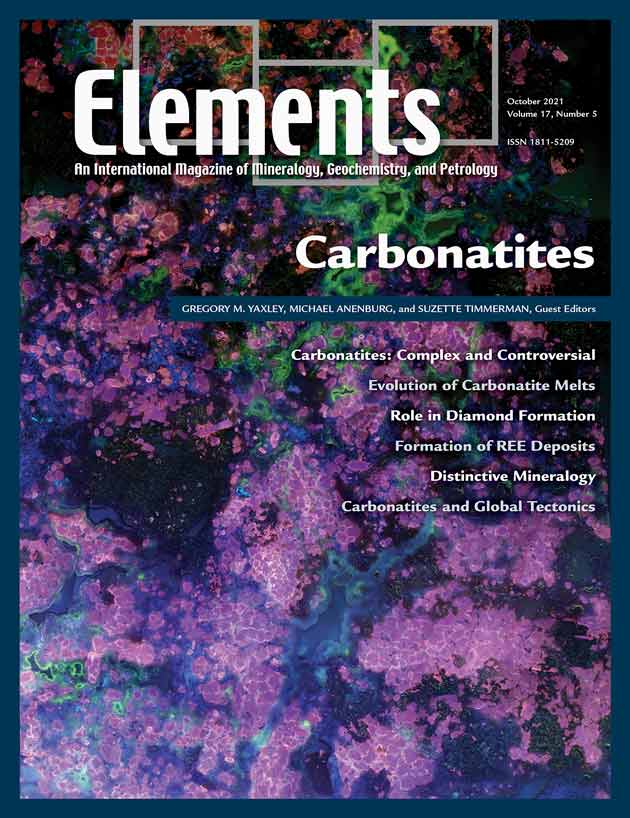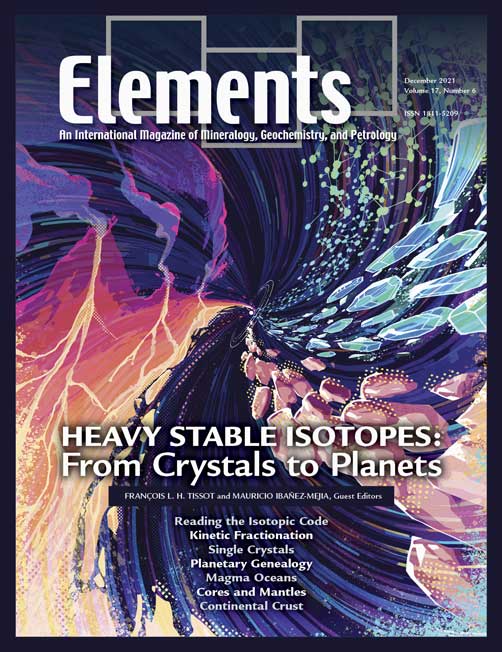Issues Published in 2021 -- Volume 17
- February (v17n1) Shedding Light on the European Alps
- April (v17n2) Speleothems
- June (v17n3) Exploring Earth and Planetary Materials with Neutrons
- August (v17n4) Geoscience Beyond the Solar System
- October (v17n5) Carbonatites
- December (v17n6) Heavy Stable Isotopes: From Crystals to Planets
February 2021 – Volume 17 Number 1
Shedding Light on the European Alps
GUEST EDITORS
Anders McCarthy and Othmar Müntene
PRINCIPAL EDITOR
John M. Eiler
April 2021 – Volume 17 Number 2
Speloethems
GUEST EDITORS
Kathleen R. Johnson and Joshua M. Feinberg
PRINCIPAL EDITOR
Jon Blundy
June 2021 – Volume 17 Number 3
Exploring Earth and Planetary Materials with Neutrons
GUEST EDITORS
David R. Cole and Nancy L. Ross
PRINCIPAL EDITOR
Richard J. Harrison
August 2021 – Volume 17 Number 4
Geoscience Beyond The Solar System
GUEST EDITORS
Oliver Shorttle, Natalie R. Hinkel, and Cayman T. Unterborn
PRINCIPAL EDITOR
Becky Lange
October 2021 – Volume 17 Number 5
Carbonatites
GUEST EDITORS
Gregory M. Yaxley, Michael Anenburg, and Suzette Timmerman
PRINCIPAL EDITOR
John Eiler
December 2021 – Volume 17 Number 6
Heavy Stable Isotopes: From Crystals to Planets
GUEST EDITORS
François L. H. Tissot and Mauricio Ibañez-Mejia
PRINCIPAL EDITOR
Richard Harrison


